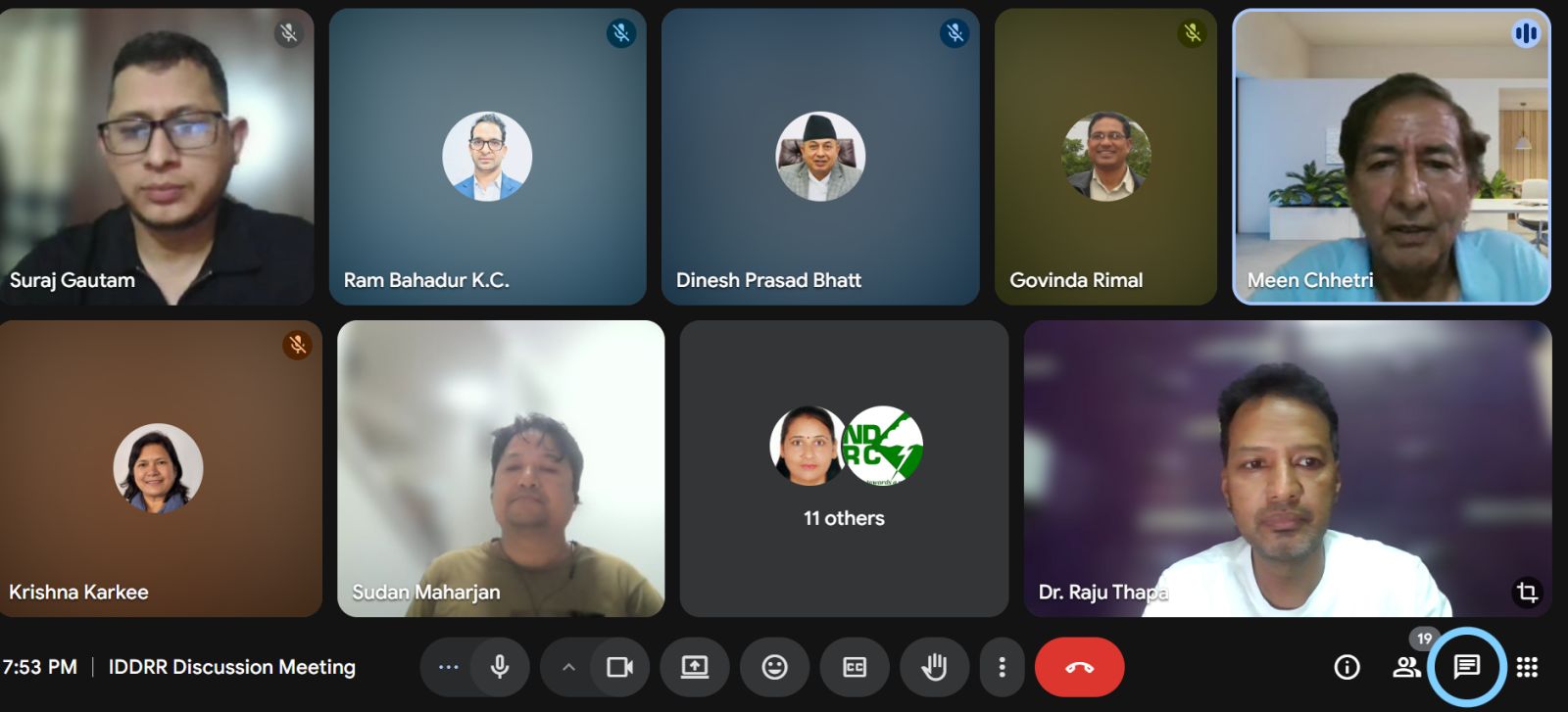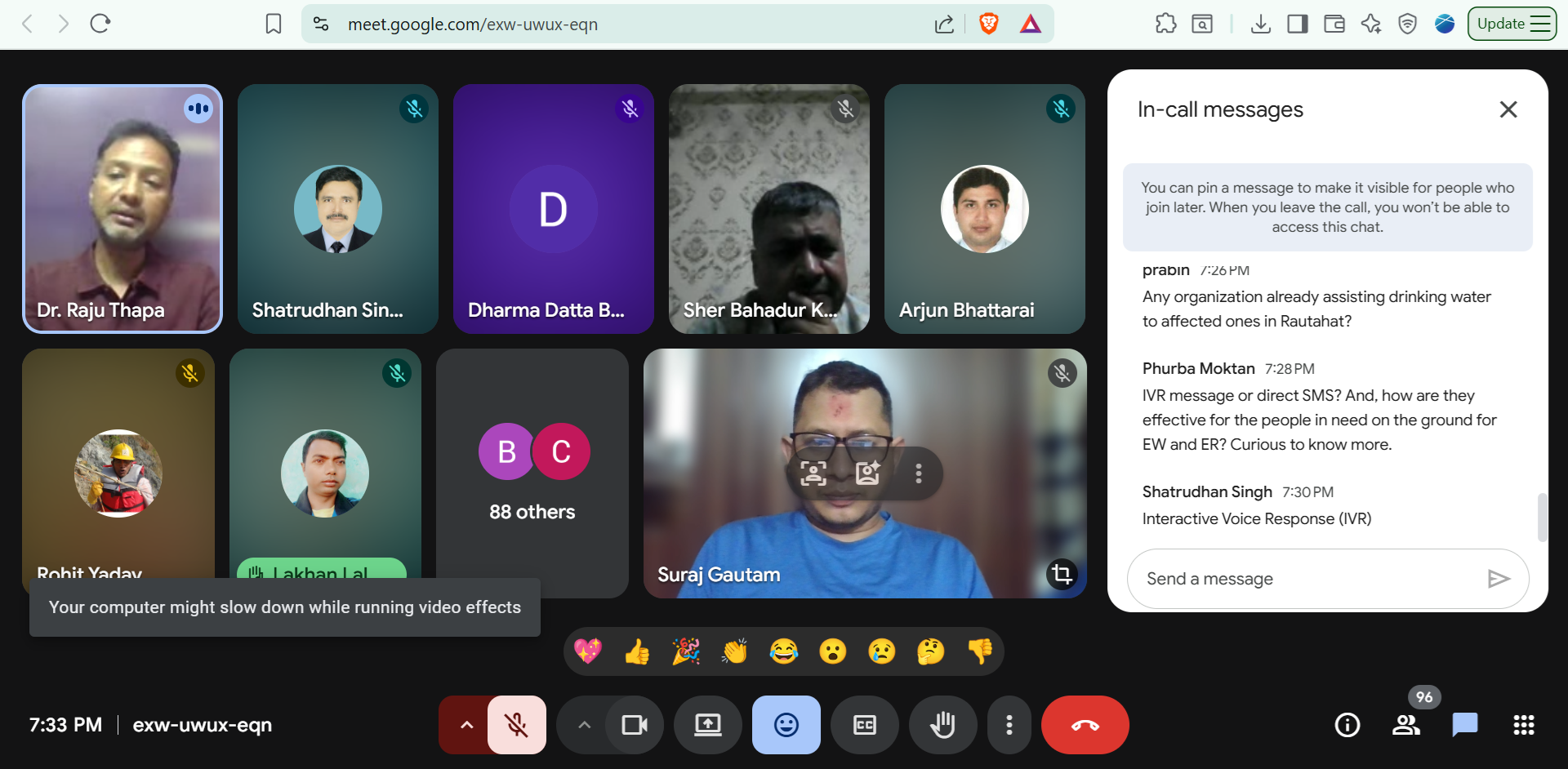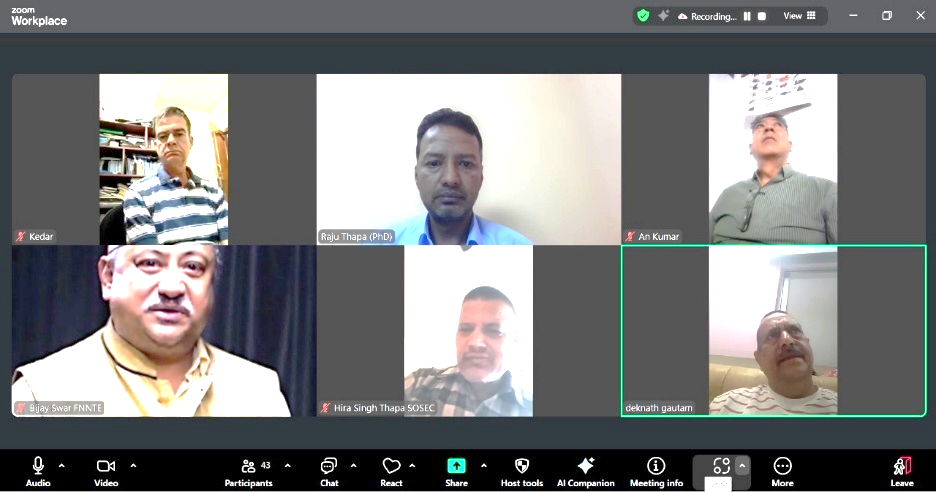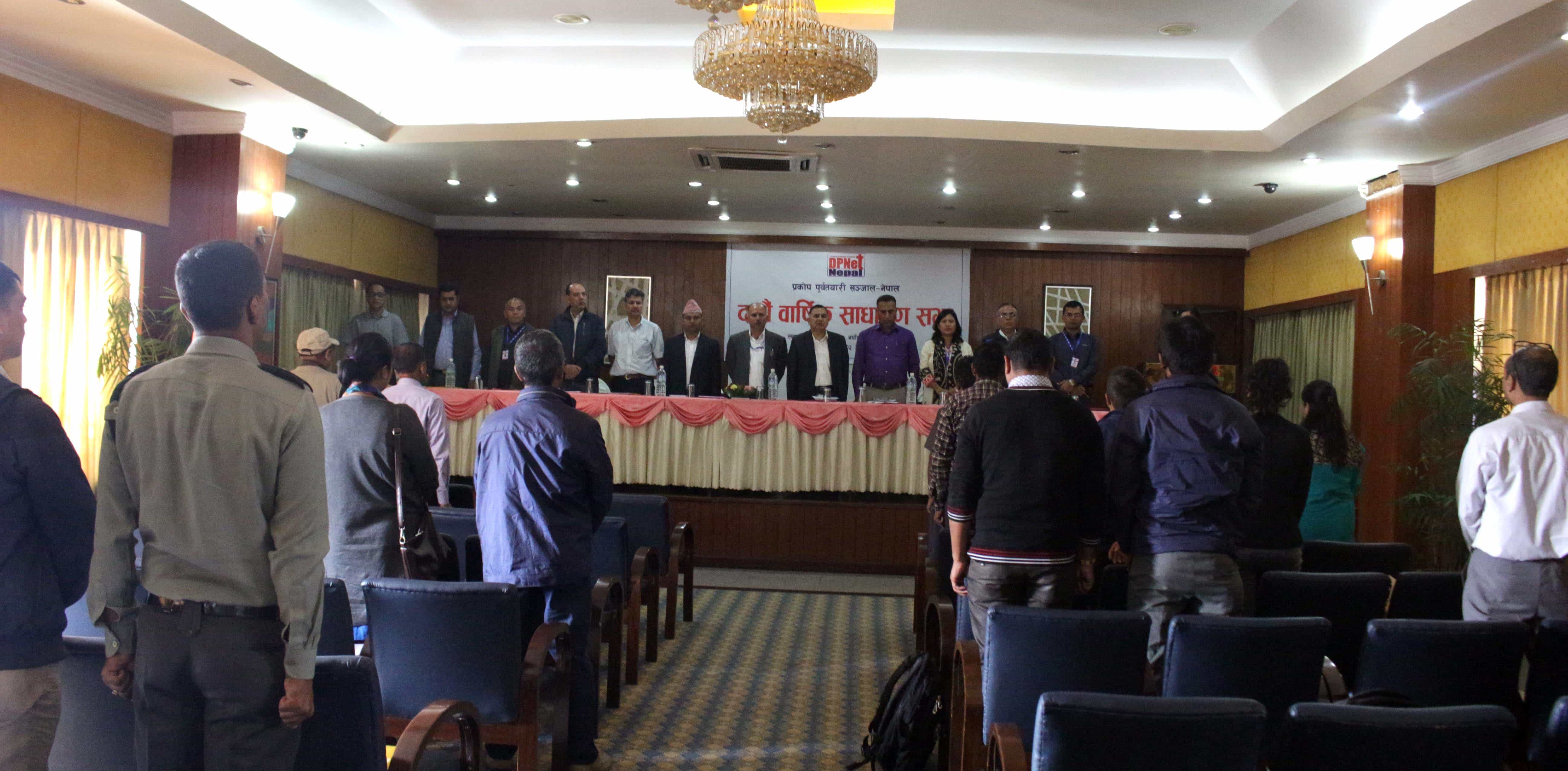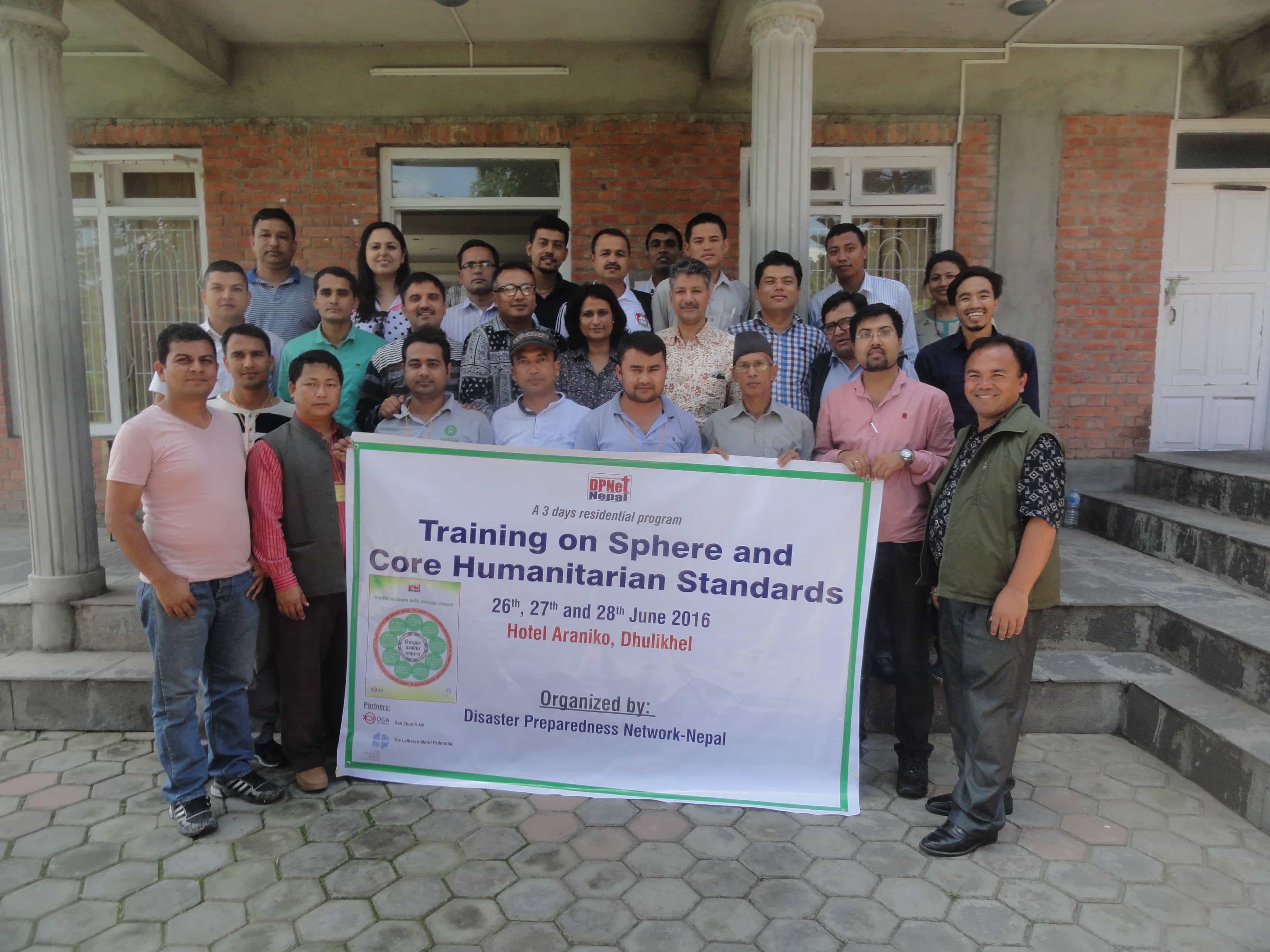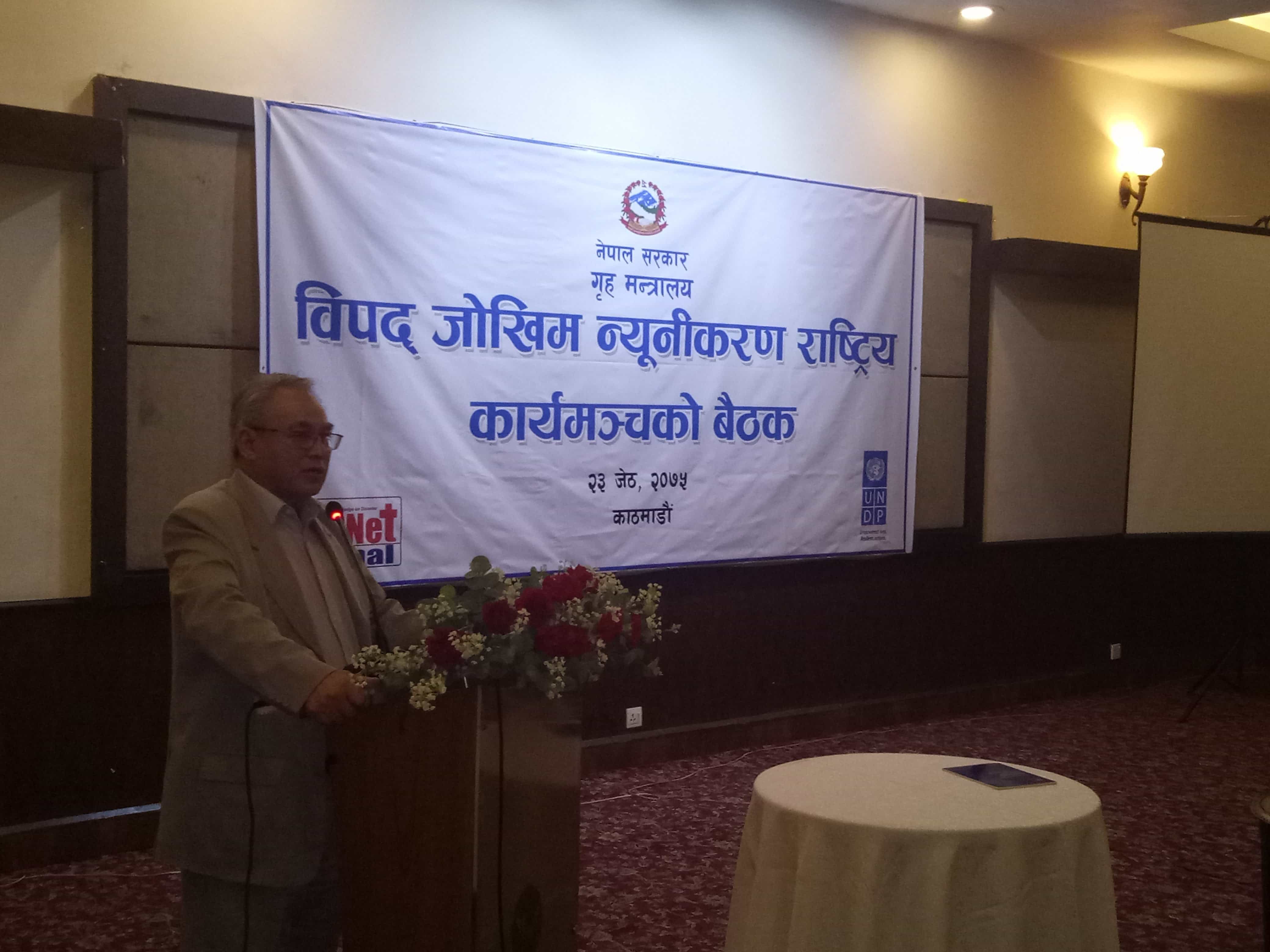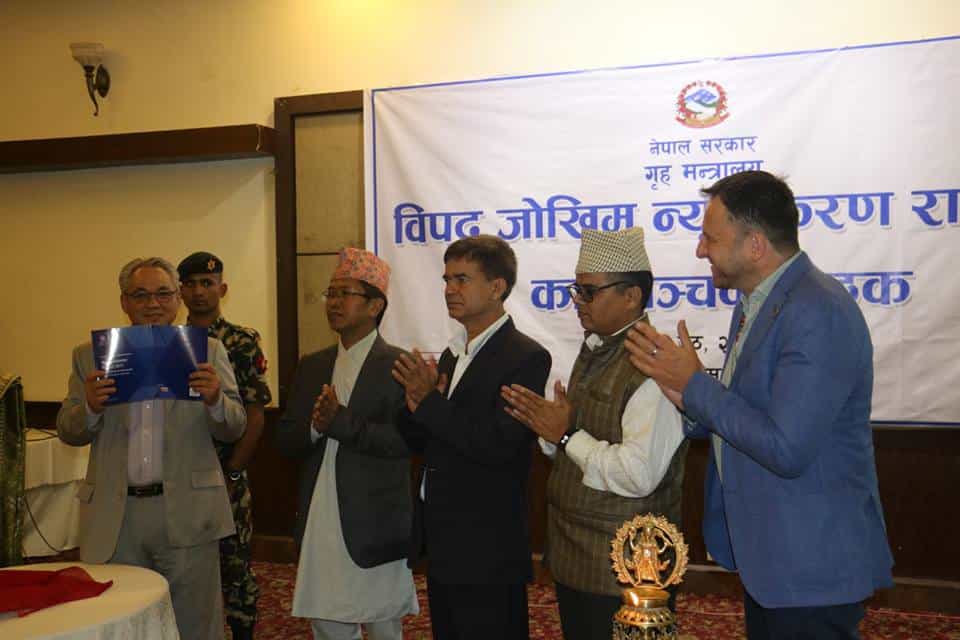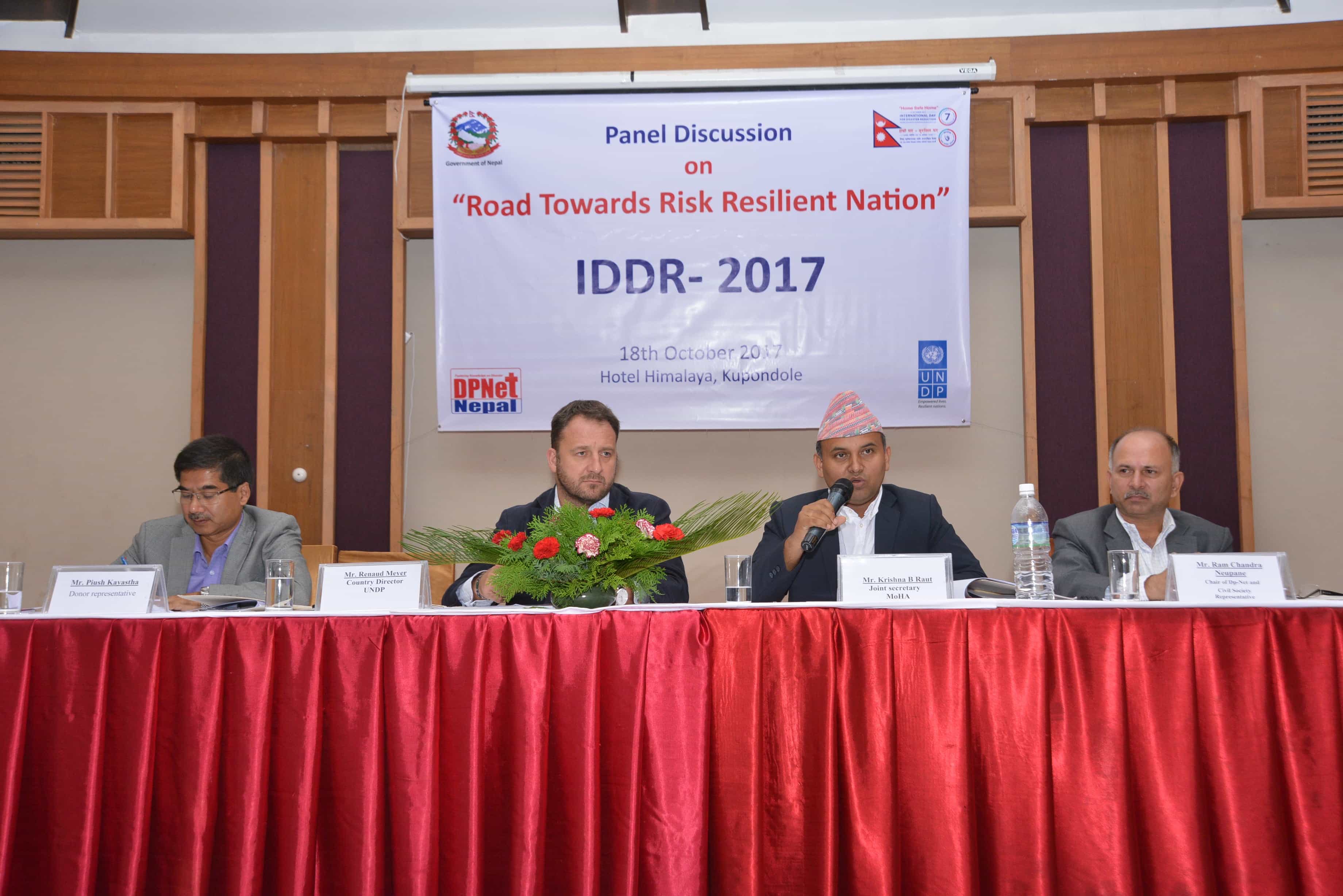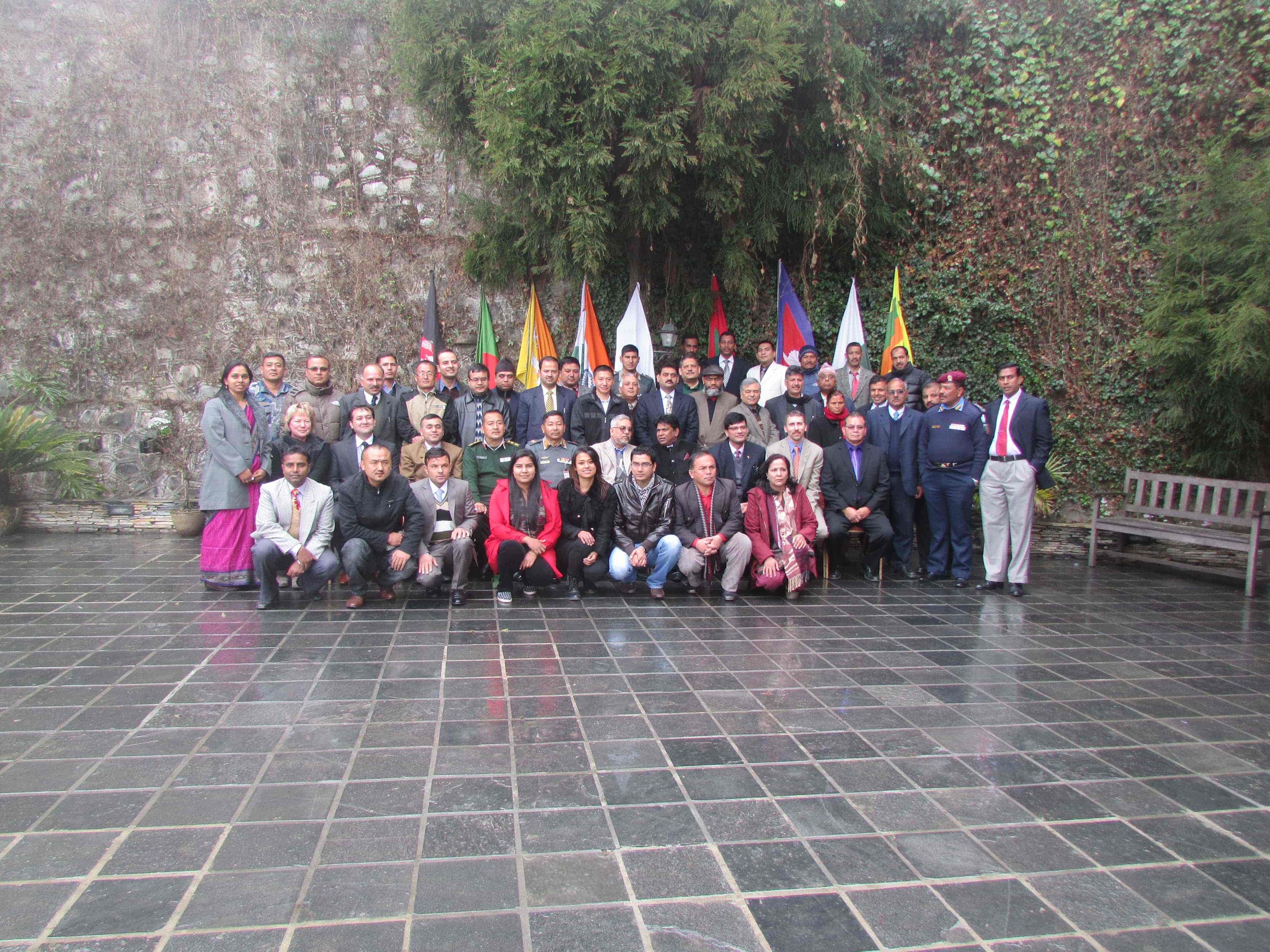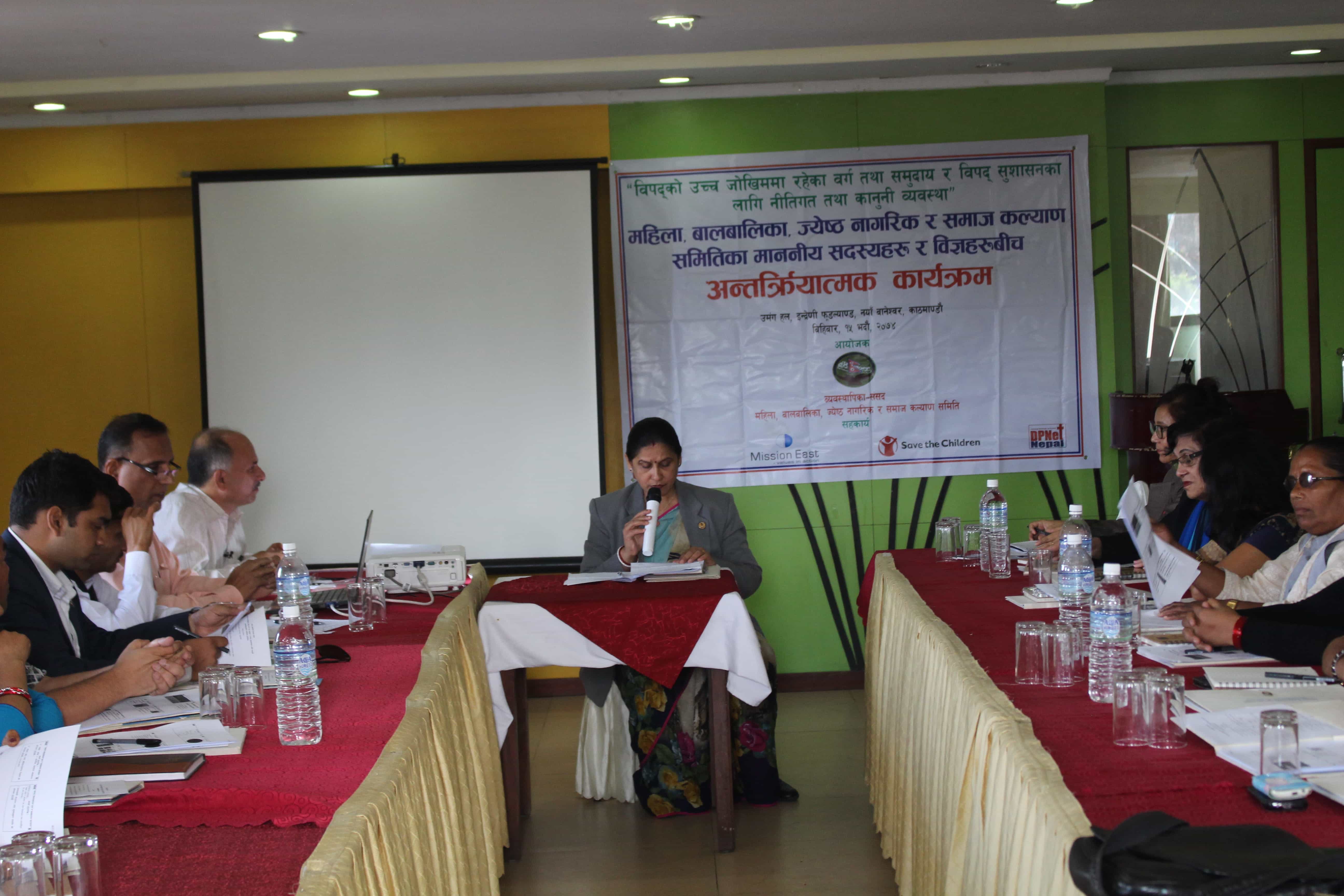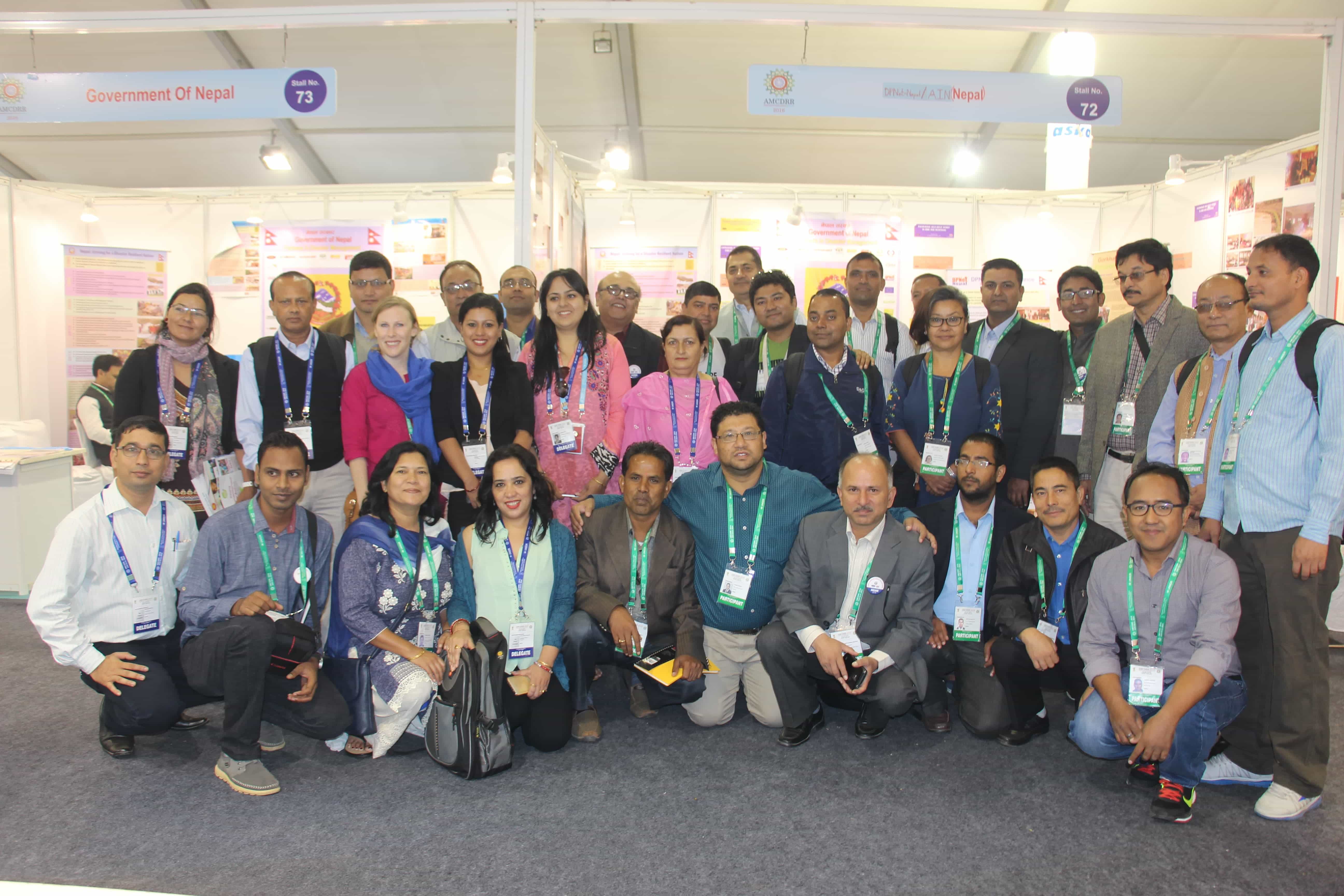Interaction program on Establishing Media Beats Dedicated to DRR and International Lightening Safety Day
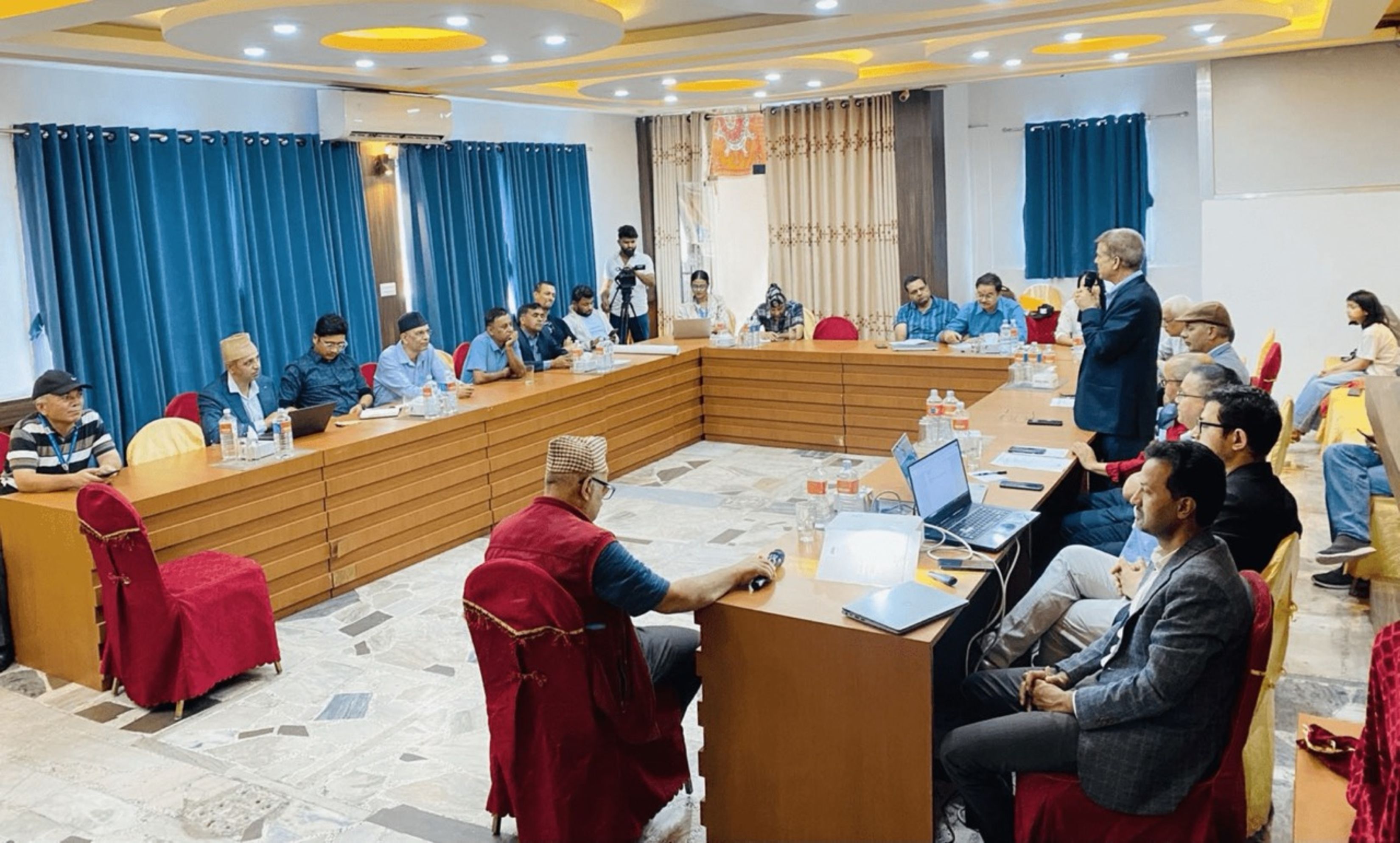
On June 28, 2024, DPNet Nepal organized an interaction program on Establishing Media Beats Dedicated to DRR and International Lightening Safety Day. The discussion program was attended by prominent media personalities, NGOs, INGOs, UN agencies and other stakeholders. The program was facilitated by DPNet IPP, Mr. Surya Bahadur Thapa. Mr. Thapa explains that the interaction session aims for strategic planning meeting for DRR media beats as well as International Lightning Day. He stressed the current ongoing issues such as heat waves, monsoons, floods, and landslides. Mr. Thapa emphasized the role of the media in raising awareness, sensitizing the public, and informing authorities. DPNet, as the umbrella organization for all DRR-related efforts, recognized the need to establish dedicated DRR media beats. He expected that this interaction will play a significant role in enhancing our capacity to address and manage these concerns. The natural calamity relief act, 1982 has been in effect for a long time, and we have made significant efforts to integrate management into policy through the DRRM Act. The MoHA and NDRRMA alone cannot address these issues effectively; there is a need for a dedicated preparedness and mitigation section for successful implementation. He added, DPNet emphasized the need for a unified strategy in reporting and policy advocacy for DRR. Highlighting DPNet's role as a representative body for all participants, Mr. Thapa called for collective efforts to achieve common DRR goals. He addressed that historically, DRR-related issues lacked a dedicated focus in news reporting. However, significant progress has been made, with most media outlets now equipped to cover DRR topics effectively. The speaker encouraged continued development in this area to ensure thorough and accurate dissemination of DRR information.
Welcome remarks by Mr. Suraj Gautam, General Secretary, DPNet Nepal
Mr. Gautam delivered the welcome remarks, extending greetings to all participants. He highlighted that DPNet Nepal had organized a discussion program focusing on media, on August 5th, 2023. Mr. Gautam mentioned that despite the development of a forecasting system by the Department of Hydrology and Meteorology (DHM), there remains limited awareness regarding its effectiveness and application. Therefore, he emphasized the need to enhance awareness efforts to mitigate property and life losses mobilizing media effectively.
Mr. Kedar Neupane, former government Secretary and DPNet Advisor outlined the program's objectives, emphasizing the role of media and his past governmental experience. He highlighted the need for political improvements to better support the media sector in Nepal. He stressed the importance of specialized media beats for DRR to ensure effective information dissemination. Mr. Neupane requested media personnel to promote DRR coverage, noting its current early development stage. He also mentioned the DHM new daily weather bulletins and the significance of disseminating this information. Lastly, he addressed the importance of observing Lightning Safety Day, a topic often overlooked.
Dr. Shriram Sharma, SALNET, presented a presentation on International Lighting Safety Day, 2024. Dr. Sharma is a representative from Nepal who has chaired the South Asian Lightning Network (SALNET) Since 2019, and first Nepalese member since last year for International Electrotechnical Commission (IEC). He highlighted that lightning is a significant yet often overlooked hazard, posing greater risks to developing countries. International Lightning Safety Day was established in 2011 after a tragic lightning strike in Uganda which killed 18 children. Nepal hosted its first international lightning conference in October 2011, inspired by this incident. Lightning hazards, closely related to electrical engineering, have caused severe incidents worldwide. In South Africa, lightning struck a football field, collapsing players, and in Congo, 11 players were died. Nepal is also vulnerable, particularly as it belongs to the Hindu Kush Himalayan belt. Nepal, India, Bangladesh, and Sri Lanka collectively lose about 4,000 lives annually due to lightning. Although the number of lightning-related deaths in Nepal has decreased in recent years, it still records 100 deaths and 300 injuries annually. He mentioned that the Makawanpur is the most affected district in Nepal. Dr. Sharma emphasized that Nepal lacks advanced lightning forecasting technology. Compared to the U.S., where only 16-17 lightning deaths occur annually, developing countries are more vulnerable. Lightning strikes are more common in the Terai region at midnight and in hilly areas during the afternoon. He also explained the common myths associated with lightning have been debunked, such as the belief that Kathmandu is immune. Electrical and electronic equipment is highly susceptible to lightning damage. Surge Protective Devices (SPDs) can help protect against lightning, and the IEC has guidelines for using thick wires to handle the high currents generated by lightning, which can reach up to 300,000 amperes. Lightning is an underrated hazard, with 360 annual incidents reported by the police bureau. Efforts to revive damaged lightning recording equipment in Nepal have been unsuccessful. Mr. Shriram has been advocating for lightning issues since 2007, emphasizing the need to incorporate disaster management into the curriculum. His initiatives include installing lightning protection systems in schools and developing a training module for lightning and electrical inspections. He overviewed that tall buildings are more prone to lightning strikes than shorter ones. The SALNET website features an alert map showing current lightning incidents. Lightning requires specific conditions to strike and produces loud thunder, indicating proximity. Lastly, he provided safety tips including avoiding outdoor areas during lightning, but vehicles and planes are safe. Closing doors and windows can help prevent lightning from changing its path and entering buildings. The speaker recommended using alert apps for safety.
Remarks by Dr. Meen Bahadur Chhetri, DPNet Former Chairperson and Present Advisor, highlighted the importance of discussing lightning safety alongside urging media personnel to reconsider posting sensitive photos and videos on social media, as these can often lead to mental trauma. He urged the DPNet team to organize more intensive discussions on lightning issues during their monthly dialogue programs, emphasizing the need for increased awareness in this area. He also noted the observed trend that events with ministers as guests attract more public attendance, whereas those with academics as core speakers are less attended.
Mr. Rajendra Dahal from Media Sector appreciated the presentation shared by Dr. Shriram Sir and emphasized the need to incorporate it into the curriculum study. In the past, the lack of research hindered information flow, but now we should disseminate information gathered from research efforts. Despite Nepal's limited local research capacity, many projects rely on funding from donors and expertise from foreign-trained professionals. It is essential to prioritize the integration of disaster topics right from the beginning. He stressed that the media personnel require sensitization to grasp the context and effectively engage with experts by asking pertinent questions.
Mr. Govinda Luitel, Consulting Editor, Setopati, highlighted that while the government often assesses disaster impacts in terms of percentages, the individual losses for affected families are substantial. In Nepal, there are over 7,000 suicides annually. He pointed out that while there is extensive coverage of incidents after they occur, there is a significant lack of media content focusing on prevention, preparedness, and raising awareness. He highlighted that the FM radio channels have a more direct impact at the community level. Mr. Luitel noted that only the current Home Minister has actively discussed DRR issues, contrasting with past ministers who did not prioritize such discussions. He advocated for the mapping of historic heritage sites to assess their vulnerability to disasters and emphasized the importance of providing media with comprehensive coverage of these issues.
Mr. Keshab Dutta Bhatta, Treasurer, DPNet Nepal, emphasized that the media should write content on a balanced way from all three phases of the disaster while not only focusing on a single one.
Mr. Surendra Pandey, DRR Media Platform, Chairperson, stressed that when the media is perceived as being aligned with NGOs and INGOs, usually creates a negative impression that the media might be benefiting from these organizations. In reality, the media plays a crucial role as a bridge between the community and experts, helping to fill informational gaps. He called for suggestions on how we can enhance our approach in this regard, emphasizing the need for action-oriented strategies rather than mere paperwork. It is crucial to focus on process-oriented initiatives to effectively address these challenges.
Ms. Anita Bindu, Senior News Editor, NTV, highlighted the importance of collaboration among all stakeholders with shared objectives in DRR. She emphasized that the media should maintain a critical writing approach in their reporting. During the program, there was a realization of the importance of not only raising awareness but also mainstreaming DRR efforts. Ms. Bindu pointed out that the establishment of the DRR Media Platform aimed to foster collaborative efforts. However, she also noted a lag in how government roles and media approaches handle DRR information. She stressed the necessity for media personnel to be well-versed in DRR basics through training or workshops. One significant concern raised by Ms. Bindu was ensuring the safety and precautions for media personnel during dangerous disaster events. She also highlighted the importance of psychological counseling for media personnel in such situations.
Mr. Jiwan Bhandari, Treasurer, DRR Media Platform, highlighted the diverse reporting nature of television, radio, and Social media, noting their distinct approaches. He suggested that representatives from each type of media should receive training in DRR to ensure comprehensive coverage. Mr. Bhandari emphasized the importance of media investing efforts in producing quality news. He also mentioned the significance of fellowship programs aimed at enhancing media skills in this area. He suggest on the creation of a roster of experts covering various aspects and hazards of disasters, which should be readily accessible to the media. Given the technical nature of DRR, he stressed the need for clear technical terminology and news guidelines. He highlighted the importance of discussing DRR-related issues in the news and covering reports and exercises conducted by relevant organizations, which could significantly enhance coverage and impact.
Mr. Krishna Raj Kaphle, Project Liasion Specialist, UNDP, appreciated the presentation and information shared by Dr. Shriram Sir. He overviewed, that following the Koshi floods, efforts in disaster management have increased, but disasters are often treated in isolation, focusing mainly on incidents and losses. It is crucial to ensure information reaches the grassroots level. Although policies integrate DRR and resilience aspects of the SDGs, implementation is lacking. The media tends to highlight losses rather than preventive measures like Early Warning Systems. Mr. Kaphle highlighted that there is a need for better training access and a proactive approach, to integrate DRR into development. Knowledge sharing in the media and from experts is essential. He shared that UNDP and DPNet are closely linked, as DPNet was initially supported by UNDP. Donor partnerships are proposal-based, and donors are also members of DPNet. Therefore, this forum should facilitate meetings between the media and donors. It is important to convey disaster risk information to those who are directly affected by disasters.
Mr. Kedarnath Koirala, Bagmati TV, highlighted the importance of livestock in providing early warning signals before a disaster. He emphasized the need for media outlets to create a comprehensive list of experts across various sectors. Mr. Koirala stressed the necessity of establishing a network of journalists, regardless of their sector, and connecting them with these experts. He urged the media to actively seek out expert opinions and highlighted the importance of sensitizing the media to raise awareness about disaster preparedness and risk reduction. "INGOs and UN organizations mostly focus on documentation and recording," Mr. Koirala noted. He emphasized that DPNet must operate across all seven provinces, ensuring effective allocation and expenditure of resources to enhance disaster management efforts.
Mr. Rabin Dahal, a representative of AIN, emphasized the importance of two-way communication as a crucial aid in disaster management. Speaking at a recent program, he shared that there was confusion about whom to invite from the media, despite wanting their participation. Mr. Dahal pointed out the challenges in organizing these programs, including the lack of clear ideas on whom to invite. He stressed the need to use mass communication to disseminate learned information effectively. "Our collective objective is to reduce the impact of disasters," Dahal said. He also highlighted the need to bridge the gap between AINTGDM and media networks, calling for their collaboration. While facilities for reporting are available in Kathmandu, significant efforts are required outside the capital. Mr. Dahal mentioned the recent dissemination in Jajarkot, supported by DPNet, and emphasized that media houses should also take responsibility for sharing critical information. He further noted that accurate forecasting and information sharing can save lives. "The more we forecast and share information, the more lives we can save," he added. He concluded by emphasizing that disaster management requires robust communication strategies, especially to reach and educate communities beyond major cities.
Closing Remarks by Dr. Raju Thapa, Chair, DPNet Nepal
Dr. Thapa emphasized that there exists a symbiotic relationship between the media and the community. He highlighted the importance of involving the media at the community level to ensure effective communication and information dissemination. Dr. Thapa also requested INGOs and UN agencies to include the role of media in their proposals and programs to strengthen this vital connection. Dr. Thapa highlighted the crucial role of media and the need for enhanced awareness efforts, particularly concerning the effectiveness of DHM's forecasting system and the importance of observing Lightning Safety Day. He stressed for the improved communication strategies to effectively educate and inform communities, about disaster risks and mitigation measures and formally closed the program.
